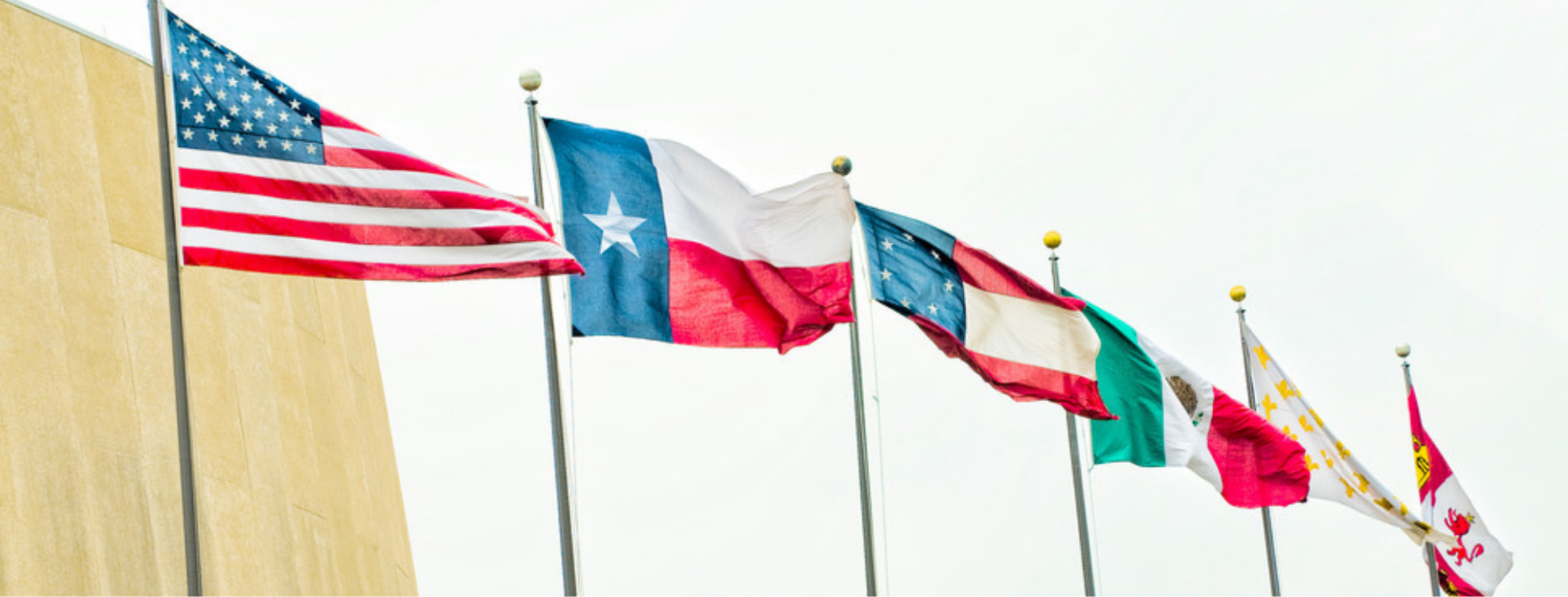Single Reverse Flag vs. Double-Sided Flag: Understanding the Difference
Posted by Hayley Adams on Sep 28th 2023
Flags come in various forms, an each is designed for specific purposes. Two common types you may encounter are the single reverse flag and the double-sided flag. Which one is right for you? Here are some key differences between the two so you can best select the one for your needs!
Single Reverse Flag
A single reverse flag is the most common type of flag you'll see. It has a design or pattern on one side, while the reverse side typically shows a mirror image. This means that when you view it from the back, the image appears reversed.
For example, the national flags of most countries, like the American flag, are single reverse flags. When you look at the reverse side of the American flag, you'll see a mirror image of the stars and stripes.
Reasons for Flying a Single Reverse Flag
- Tradition: Many national flags have been designed this way for centuries, and it's a matter of tradition and historical significance.
- Cost-Effective: Single reverse flags are often more affordable to manufacture due to the simpler design.
- Flyability: Single Reverse flags are lighter in weight and fly easier, making them suitable for many environments
Double-Sided Flag
A double-sided flag, as the name suggests, features a design that is visible on both sides. This is typically achieved by sewing two single flags back-to-back or using a special printing process. Note that double-sided flags typically costs about 2-3x more than single reverse flags due to the extra material and labor.
For example, sports teams often use double-sided flags so that their logo and name will be displayed correctly on both sides of their flag.
Reasons for Flying a Double-Sided Flag
- Visibility: In situations where a flag needs to be visible from both sides, such as in sports events or parades, a double-sided flag ensures the message or design is not distorted.
- Advertising: Businesses and organizations may use double-sided flags for promotional purposes, allowing their logo or message to be seen from different angles.
- Aesthetic Appeal: Double-sided flags can be more visually appealing, as the design is consistent on both sides.
- Flyability: Requires higher winds to fly due to extra weight of the flag.
In conclusion, the choice between a single reverse flag and a double-sided flag really just depends on the intended use and personal preference. Single reverse flags are suitable for most scenarios, while double-sided flags are ideal when visibility and aesthetics matter. Whether you're proudly displaying your national flag or promoting a brand, understanding the difference between these flags helps you make the best choice that best suits your needs!

